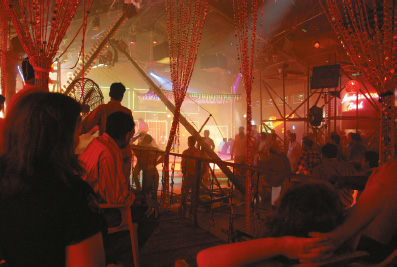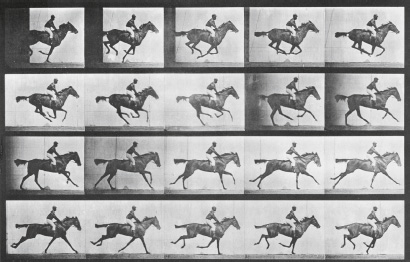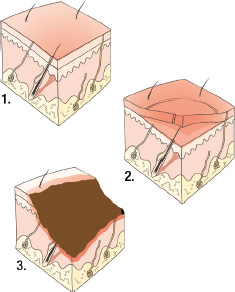7dOrganize information.
Remember to consider your audience, purpose, and topic as you think about how you will organize information to make it accessible and persuasive to your audience. At the simplest level, writers most often group information according to four principles—space, time, logic, and association.
Organizing according to space
The organizational principle of space refers to where bits of information occur within a setting. If the information you have gathered is descriptive, you may choose to organize it spatially. Using spatial organization allows the reader to “see” your information, to fix it in space.
INFORMATION ORGANIZED SPATIALLY

The scene was being filmed in a windowless building with a corrugated tin roof. We entered through the single side door and sat in folding chairs on a platform along one wall, separated from the rest of the room by beaded red curtains. Behind us was darkness. On the far wall, neon lights glowed dimly, illuminating a few unoccupied barstools on the other side of the room. But the front of the room was ablaze with light. Purple and white floodlights beamed down onto a circular dance floor, creating an almost supernatural glow. The film crew in the center of the room stood silhouetted against the light like an audience waiting for a show to begin.
Organizing according to time
The principle of time refers to when bits of information occur, usually chronologically. Chronological organization is the basic method used in cookbooks, lab reports, instruction manuals, and stories. Writers of these products organize information according to when it occurs in some process or sequence of events (narrative).
INFORMATION ORGANIZED CHRONOLOGICALLY

In July of 1877, Eadweard Muybridge photographed a horse in motion with a camera fast enough to capture clearly the split second when the horse’s hooves were all off the ground—a moment never before caught on film. Throughout the fall of that year, newspapers were full of the news of Muybridge’s achievement. His next goal was to photograph a sequence of such rapid images. In the summer of 1878, he set up a series of cameras along a track and snapped successive photos of a horse as it galloped past. Muybridge’s technical achievement helped to pave the way for the first motion pictures a decade later.
Organizing according to logic
The principle of logic refers to how bits of information are related logically. The most commonly used logical patterns include illustration, definition, division and classification, comparison and contrast, cause and effect, problem and solution, use of analogies, and narration. The example that follows organizes information logically, according to the principle of division. For other examples of paragraphs organized according to these logical patterns, see Chapter 8.
INFORMATION ORGANIZED LOGICALLY

Burns can be divided into three types based on the severity of tissue damage: (1) Superficial, or first-degree, burns damage only the top layer of skin (epidermis). They are red and painful, but not serious. (2) Partial thickness, or second-degree, burns damage both the epidermis and the layer just below it (dermis). Second-degree burns, which can be very painful, are characterized by blistering, swelling, and redness. (3) Full thickness, or third-degree, burns destroy both the epidermis and the dermis and damage underlying muscle and other tissues. They appear charred and black. The burn area itself is numb, but the surrounding area can be very painful. Third-degree burns can be fatal if the percentage of affected skin is sufficiently large.
Organizing according to association
The principle of association refers to how bits of information are related in terms of visuals, motifs, personal memories, and so on. Many contemporary essays are organized through a series of associations that grow directly out of the writer’s memory or experience. Thus, associational organization is often used in personal narrative, where writers can use a chain of associations to render an experience vividly for readers.
INFORMATION ORGANIZED ASSOCIATIONALLY

Flying from San Francisco to Atlanta, I looked down to see the gentle roll of the Smoky Mountains begin to appear. Almost at once, I was back on my Granny’s porch, sitting next to her drinking iced tea and watching all the grownups take turns cranking the ice-cream freezer. Finally the moment came when even the strongest arms could barely turn the churn. Granny lifted the cream can out of the wooden bucket, opened the lid, scooped the gleaming ice cream into a bowl, and topped it with ripe chopped peaches. I still haven’t tasted anything better!
In much of your writing, you will want to use two or more principles of organization. In addition, you may want to include not only visuals but sound and other multimedia effects as well.
Organizing Visuals
AT A GLANCE
Organizing Visuals
- Use images and visuals to capture your readers’ attention and interest in a vivid way, to emphasize a point you make in your text, to present information that is difficult to convey in words, or to communicate with audiences with different language skills.
- Consider how the image works as an image and in combination with the text, and think about how readers are likely to respond to it.
- Place each visual as near as possible to the text it illustrates.
- Introduce each visual clearly: As the map to the right depicts….
- Comment on the significance or effect of the visual: Figure 1 corroborates the firefighters’ statements….
- Label each visual appropriately, and cite the source.
Watch and respond to the video Filling the gaps.